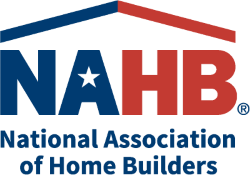NAHB: Fed Chair Powell Warns of Pain During Inflation Fight

Federal Reserve Chairman Jerome Powell adopted a hawkish tone on inflation during his Aug. 26 speech at the central bank’s annual economic symposium in Jackson Hole, Wyo. Powell stated that in order to bring down the rate of inflation, the Fed will continue to raise the short-term federal funds rate, which now has a top target rate of 2.5%.
Economic forecasters estimate the Fed will ultimately raise this rate to between 3.5% and 4% by early 2023. If the rate ultimately reaches this range, that would mean a top mortgage rate in this cycle would surpass 6%. The average 30-year fixed-rate mortgage ticked up to 5.55% last week.
Powell acknowledged that the fight to rein in inflation will cause economic pain, but said it is necessary to help avoid extended distress to the economy.
“While higher interest rates, slower growth and softer labor market conditions will bring down inflation, they will also bring some pain to households and businesses,” said Powell. “These are the unfortunate costs of reducing inflation. But a failure to restore price stability would mean far greater pain.”
Indeed, the housing sector is already feeling the negative economic consequences of tightened policy, as a housing downturn is underway.
Additionally, Powell indicated that rates will not come down quickly after reaching their high point. “Restoring price stability will likely require maintaining a restrictive policy stance for some time,” he said. “The historical record cautions strongly against prematurely loosening policy.”
NAHB Chief Economist Robert Dietz thinks that after reaching its maximum for this cycle, the federal funds rate will stay at that level for two to four quarters. As a result, the economy will see a rising unemployment rate during that time, per the NAHB economic forecast.
Powell also indicated that as data reveal slowing inflation, the pace of rate hikes will also slow. “At some point, as the stance of monetary policy tightens further, it likely will become appropriate to slow the pace of increases,” he said.
The next move by the Fed will occur on Sept. 21, with forecasters suggesting either a 50 or 75 basis point rate hike. Given the 75-basis point hike in July, a move of 50 will indicate that the slowing of the pace of increases has begun. A change of 75 would reveal that the Fed has not seen enough evidence of declining inflation.
See this analysis by Dietz following the Fed’s last rate hike in late July.
Source: National Association of Home Builders

